DADAISM
Hannah Hoch
Hannah Hoch is a artist who practiced Dadaism in the 20th century. She was an active female promoting the idea of women working creatively generally in society. She was a political iconoclast who actively critiqued prevailing society.
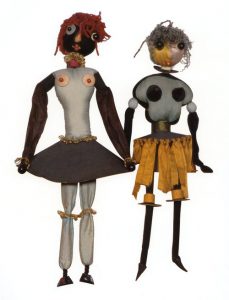
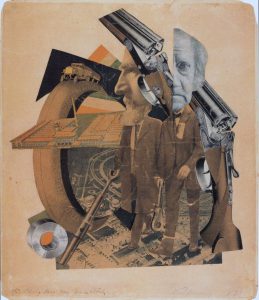
‘High Finance’ was a perfectly composed example of her innovative photomontage technique. The viewer is presented with two banker figures, each with a disproportionately large and mismatched head, one of which is a photograph of 19th century British chemist and astronomer Sir John Herschel. The effect would be comical, were it not for Höch’s intelligent arrangement of the other visual elements. One of the bankers’ heads is spliced cleanly in half, and behind it are two shotguns, which look as if they are simultaneously being aimed by and at the banker.
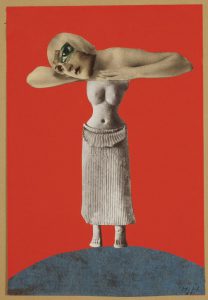
This piece actually captured my attention because of its bright red background and abstract execution of collage. “The image makes powerful use of tropes of display, such as the clear framing border, the expansive sea of the red color-field background and the blue rough semi-circle that acts as a plinth for the central figure.”
Höch combines this imagery of the non-Western sculpture with a picture of a beautiful woman from the European popular press, distorted with the addition of an exaggeratedly large eye. She suggests that society looks at women much as they look at a piece of unknown sculpture: as exotic and erotic objects. She also questions the position of the “New Woman” of the Weimar Republic, looking at her as a fragmented and constructed image that serves particular ends in society, suppressing and disregarding other possible individual choices and desires.
John heartfield
John Heartfield is a dada artist, credited as a founder of photo montage and pioneered modern collage techniques. His work was largely focused on anti-Nazi and anti-fascist statements.
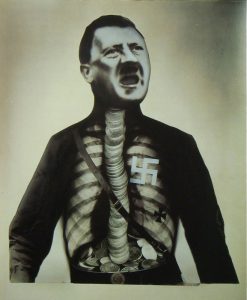
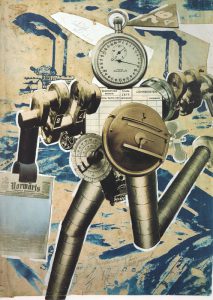
In 1927, John Heartfield brilliantly commented on corporate rationalizations for replacing human workers with robots. What will happen to those workers.
Heartfield’s collage about the corporate rationalization to have robots replace workers is eerily visionary in another way as well. I found this paragraph on the blog
SURREALISM
Founded by the poet André Breton in Paris in 1924, Surrealism was an artistic and literary movement. It is a cultural movement best known for its visual artworks and writings.
Surrealism is based around the idea of liberating thought, language and human experience. They make use of everyday objects and add juxtaposition. It was a movement which sought to release the creative potential of the unconscious mind.
SALVADOR DALI
Salvador Dali was a spanish surrealist who was among the most versatile and prolific artists of the twentieth century and the most famous Surrealist. From an early age, Dali was encouraged to practice his art and would eventually go onto study, interacting with Picasso and Magritte

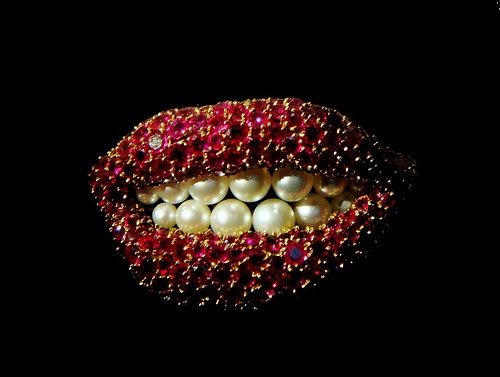
In The Mae West brooch, we find continued Surrealism in the way the teeth are literally pearls, sitting in a slightly plumped leer of a mouth, ever so slightly contorted as to make the viewer uneasy.
Rene Magritte
Rene Magritte was a known surrealist who used deadpan illustrative techniques. He wished to cultivate an approach that avoided the stylistic distractions of most modern painting. Magritte often used bowler-hatted men in his pictures – as a self portrayal. Repetition was an important strategy for Magritte, informing not only his handling of motifs within individual pictures, but also encouraging him to produce multiple copies of some of his greatest works.
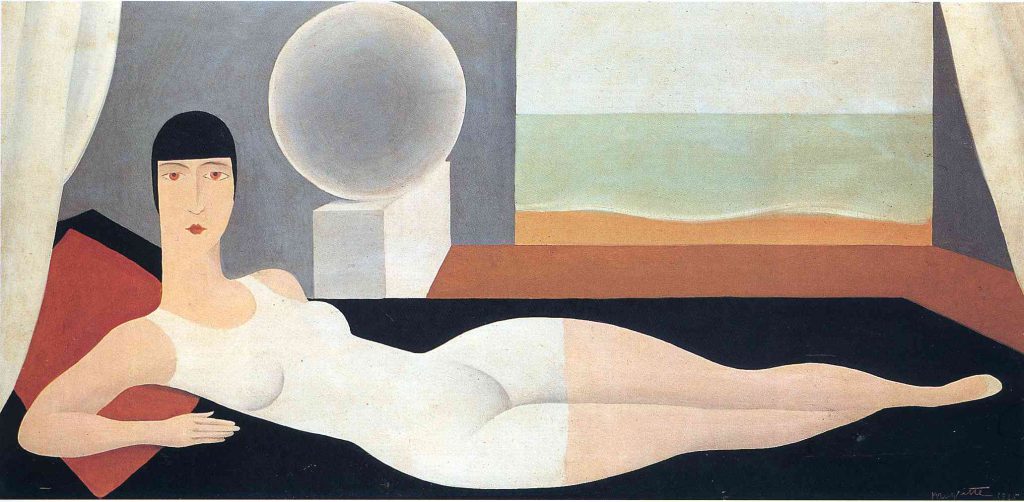
This work bears the influence of Magritte’s professional forays into the world of fashion advertising, and his interest in the works of Fernand Léger
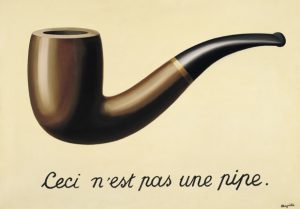
The Treachery of Images cleverly highlights the gap between language and meaning. Magritte combined the words and image in such a fashion that he forces us to question the importance of the sentence and the word. “Pipe,” for instance, is no more an actual pipe than a picture of a pipe can be smoked.
NEXT: THE PROCESS BEHIND MY COMPOSITIONS

